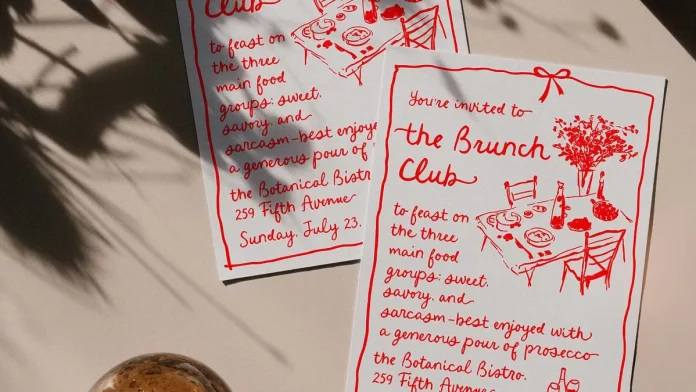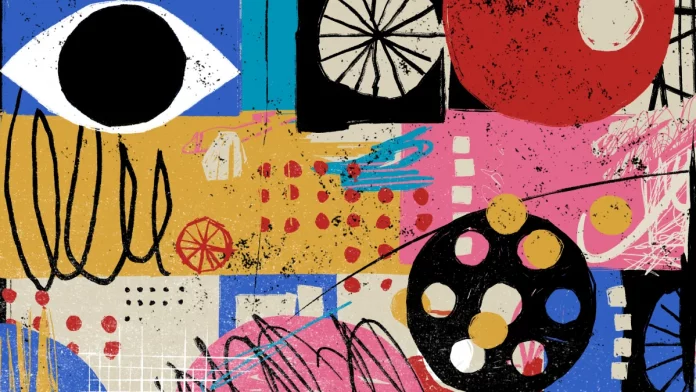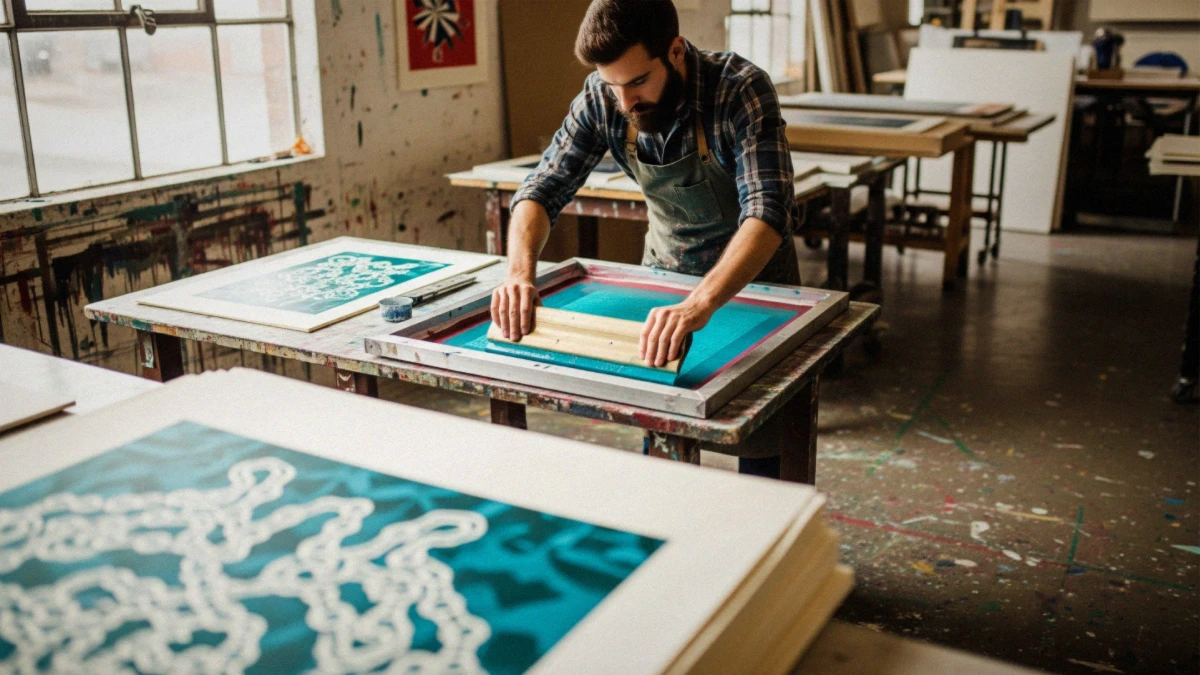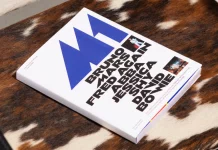AI saturation and the hunger for authenticity
Artificial intelligence has defined the mood of the mid‑2020s. Designers deploy generative tools to ideate, automate, and even execute work that previously required hours of human labour. Yet, as AI accelerates, an equal and opposite reaction is emerging. Leading creative directors argue that as technology advances at a faster pace, the industry will witness a return to handcrafted, human-centered design. Instead of celebrating seamless automation, this counter‑trend puts human warmth and imperfection back at the heart of design. Designers are increasingly valuing the idiosyncrasies of analog processes, the tactile joy of making, and the emotional connection that bespoke craftsmanship provides. This movement invites us to pause and ask: why do objects made by hand resonate so deeply when our screens can simulate almost anything? How can brands combine digital precision with the authenticity of handmade work? And what does this shift mean for designers, consumers, and businesses?
Understanding the counter‑trend: what counts as handcrafted human‑centered design?
Handcrafted human‑centered design refers to work that foregrounds the touch of its maker and seeks to serve human needs rather than machine logic. The movement celebrates irregularities, texture, and an honest engagement with material. Typical projects showcase hand‑drawn illustrations, sketchy lines, and painted textures alongside digital typography or vector logos. Analog printing techniques such as letterpress impressions, risograph effects, and ink bleeds add depth and character to digital compositions. Even typography is becoming more expressive and fluid, embracing quirks inspired by calligraphy and custom lettering instead of perfectly uniform fonts. The common denominator is not nostalgia but a conscious decision to foreground the human hand. Designers search for a sweet spot where digital tools enhance — rather than erase — the warmth and uniqueness of human expression.

The roots of the movement
This counter‑trend is not a reactionary rejection of technology; it is a response to the sense of disconnection created by algorithmic design. In many fields, convenience has become a priority. From generative fill features in Photoshop to automated design templates, software is increasingly designed to remove friction. Yet friction is part of what makes craft meaningful. Technology often denies something fundamental about human nature: people enjoy tasks that take time and skill because the process itself matters. A woven basket or hand‑thrown mug may not be as cheap as a plastic container, but it offers deeper joy and connection. This desire for meaning is magnified by rising anxiety, loneliness, and information overload — conditions that digital convenience does little to alleviate. The yearning for tactility and presence thus becomes a form of self‑care and cultural resistance.
Historically, such reactions have occurred whenever rapid industrialisation threatened craft. The late nineteenth‑century Arts and Crafts movement arose as a rebuttal to mass production. Today’s revival echoes that sentiment: as AI becomes ubiquitous, a movement is emerging that embraces traditional, unique craft bearing the maker’s DNA. Craft becomes the yin to technology’s yang — not an antidote that stops technological progress, but a balancing force that reconnects individuals with tangible making [westdean.ac.uk].
Why this movement matters now
Several factors drive the current interest in handcrafted human‑centered design. First, personalization has become a key expectation. Consumers increasingly want unique, handmade items with personal meaning rather than mass‑produced goods. Handcrafted work signals care and individuality at a time when algorithmic tools can churn out infinite variations. Second, there is a growing emphasis on sustainability and ethical consumption. Slow, intentional production aligns with eco‑friendly values and a desire to buy fewer but better things. Third, advances in technology enable new forms of craftsmanship: digital tools can assist with pattern generation or prototyping, but artisans still control final execution. Finally, there is a recognition that human connection is a differentiator. In an attention economy, the human touch offers a competitive advantage because it fosters trust and emotional resonance.
Analog influences and craft renaissance
The movement manifests across visual styles. Designers deliberately incorporate paper grain, misalignments, and ink bleeds to give digital works a tactile feel. Websites pair pristine typography with expressive hand‑drawn illustrations or painted patterns. These analog influences create tension between the predictable accuracy of software and the unpredictability of human gesture, resulting in distinctive energy. The craft renaissance goes further by reviving centuries‑old techniques such as woodcut illustration and ceramic textures, not as retro styling but as a mindset that values process and detail. The point is to imbue digital designs with authenticity and depth, making them feel considered rather than generic. Critics argue that when AI systems generate content by sampling from countless existing works, design risks becoming a “copy of a copy.” Handcraft counters this by emphasising originality and the story behind the work.
Return to physical experiences
Designers are not only adding analog textures to digital projects; they are also rebalancing virtual and physical experiences. There is even a shift in retail where brands explore more in‑person experiences alongside e‑commerce. This aligns with a broader desire for human details, nuance, and imperfections to creep back into design. Events, pop‑ups, and limited‑edition physical artifacts allow audiences to engage with products in tangible ways. By integrating physical gatherings with digital channels, brands create meaningful connections that stand out in a screen‑saturated culture. Such experiences also enable storytelling around craft processes, demonstrating transparency and reinforcing the value of handmade work.
How brands and designers are applying handcrafted human‑centered design
Blending digital and analog processes
Forward‑thinking studios do not abandon AI; they use it to support human creativity. In practice, this involves generating preliminary concepts or patterns using software and then translating them into physical media. For example, a designer might use AI to prototype color palettes or letterforms and then refine them by hand, adding gestures that a machine would never anticipate. Another strategy is to augment digital fonts with expressive analog marks, combining vector logos with painted textures or risograph prints. This hybrid approach acknowledges technology’s efficiency while preserving the individuality of the maker.
Collaborating with artisans and communities
Brands committed to handcrafted human‑centered design often engage with local craftspeople. Collaborations range from commissioning bespoke ceramics or textiles to integrating indigenous techniques into modern products. Such partnerships create economic opportunities for artisans and provide brands with authentic stories that resonate with conscious consumers. Because manual processes take time, these collaborations often involve limited editions or made‑to‑order models, reinforcing exclusivity and reducing waste.
Human‑centered storytelling
The movement extends beyond visuals to narrative. Because AI can generate images and copy quickly, brands differentiate themselves by sharing the stories of makers and the context of their work. Packaging or digital campaigns might highlight the journey of a product from concept to creation, including interviews with artisans or behind‑the‑scenes documentation. Bedow creative director Perniclas Bedow advocates for the increasing importance of design writing: articulating what you do before you do it, crafting sentences that guide design outcomes and shift results away from formulaic solutions [creativeboom.com]. Well‑written narratives help audiences appreciate the skills and values embedded in handcrafted products.
Designing for longevity and repair
Handcrafted human‑centered design values durability over disposability. Products made with quality materials and intentional craftsmanship tend to last longer and can often be repaired rather than replaced. This perspective challenges the throwaway culture of fast fashion and planned obsolescence. Designers adopt modular structures or provide repair kits and tutorials, empowering users to maintain their possessions. This circular mindset reduces environmental impact and encourages a deeper relationship between people and objects.

Critical perspectives: balancing craft and technology
Avoiding romanticization and exclusion
While the return to handcrafted human‑centered design offers compelling benefits, there is a risk of romanticization craft in ways that exclude. Handmade goods often carry higher price tags because of their labor‑intensive nature. This exclusivity can limit access and perpetuate elitism. Moreover, not every project or client can afford extended production timelines. Practitioners must avoid presenting craft as morally superior to machine‑made products. Instead, they can advocate for tiered offerings — for example, designing both accessible lines and premium handcrafted editions — ensuring that more people can enjoy meaningful objects without economic barriers.
Embracing technology as a partner
Another misconception is that embracing craft means rejecting technology. Advances in technology can blend with traditional craftsmanship to create innovative yet authentic designs. AI is increasingly embedded in creative workflows, whether designers seek it or not. Rather than positioning handcraft as an oppositional force, the movement frames it as a complementary partner. AI can automate repetitive tasks, allowing designers to focus on creative decisions and manual detailing. Machine learning can even help preserve craft by documenting techniques and training new artisans. The goal is synergy: technology scales production and broadens reach while craft adds soul and uniqueness.
Addressing labor and environmental concerns
Because handcrafted work involves human labor, designers must consider fair compensation and safe working conditions for artisans. Ethical sourcing of materials and transparent supply chains are crucial to avoid exploiting the very people whose skills are celebrated. Environmental impacts also matter: if handmade items rely on exotic materials or inefficient processes, they can offset sustainability gains. Thoughtful design involves selecting local, renewable resources and adopting energy‑efficient techniques. Certification schemes and life‑cycle analyses help brands substantiate sustainability claims.
Implications for designers, brands, and consumers
The resurgence of handcrafted human‑centered design has practical implications across the creative industry.
For designers
Professionals should expand their skill sets beyond digital tools. Learning analog techniques, even at a basic level, enhances appreciation for materiality and informs digital practice. Designers can experiment with collage, printmaking, ceramics, or letterpress to generate unique textures and forms. Additionally, they should cultivate storytelling and writing skills, as the ability to articulate design intentions becomes increasingly valuable. Maintaining curiosity about AI is also essential; understanding how generative systems work allows designers to use them strategically without losing control over their creative voice.
For brands
Businesses need to articulate why they use handcrafted human‑centered design and how it aligns with their values. Commissioning craft is not a gimmick; it should serve a genuine purpose, such as celebrating local heritage, reducing environmental impact, or fostering community. Brands must communicate transparently about the cost and time involved in handmade work, educating customers about the value they receive. They also need to design customer experiences that integrate physical and digital touchpoints, ensuring consistency and authenticity across channels. Offering repair services, limited editions, and customization options can deepen brand loyalty and justify premium pricing.
For consumers
The counter‑trend invites individuals to reflect on their consumption habits. Instead of constantly upgrading to the latest product, consumers can invest in fewer, better items that hold personal meaning and can be repaired or passed down. Supporting handcrafted human‑centered design not only rewards artisans but also fosters mindful consumption. At the same time, consumers should remain critical: not every “handmade” label guarantees ethical production. Asking questions about materials, labor practices, and environmental impact helps ensure that purchases align with personal values.
Conclusion: Craft as a catalyst for connection
The return to handcrafted, human‑centered design signals more than a fleeting trend. It is a response to the emotional void left by algorithmic design and the environmental costs of mass production. By embracing human touch, designers create work that resonates on a deeper level. They remind us that design is not just about technical perfection but about fostering human connection and well‑being. As technology continues to evolve, craft offers a counterbalance — a way to remain present, to savor imperfection, and to honor the creative impulse that defines us. The future of design will not be decided by AI alone; it will be shaped by the dialogue between humans and machines, between efficiency and empathy. Readers are encouraged to participate in this dialogue, to value the handmade and to demand that technology serve, rather than erase, our humanity.
For more creative insights, explore our AI and Graphic Design categories or subscribe to our newsletter to stay inspired and up to date. In addition, read our article about ‘Imperfection, the new perfection, and the rise of handcrafted design’. Another great read you might like enjoy is: ‘Textural & Analog Revival: Why The Future of Digital Media is Handmade’.
Subscribe to our newsletter!

















